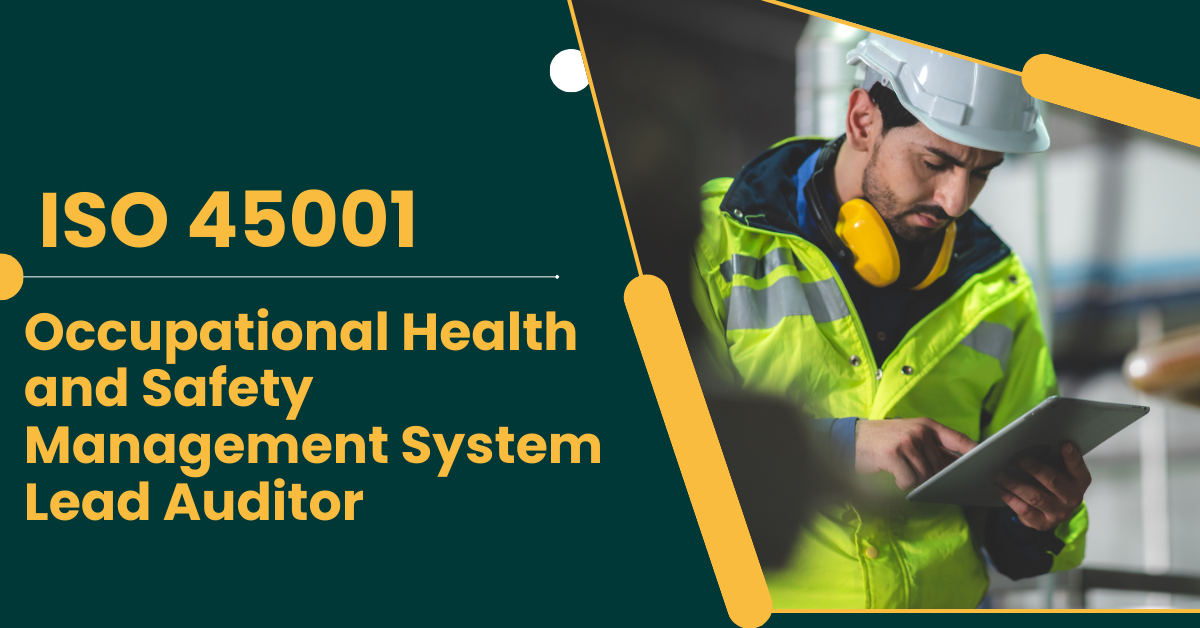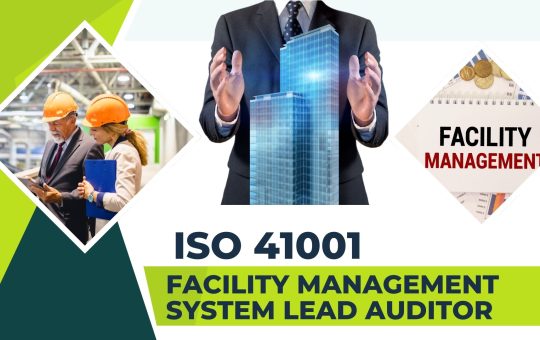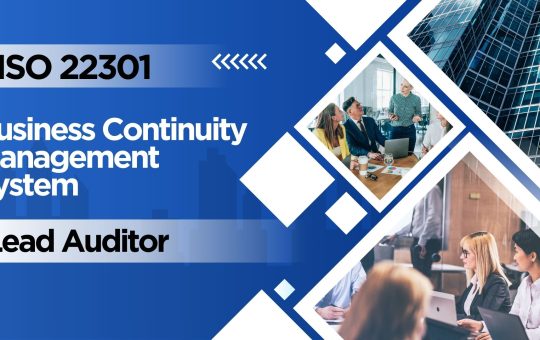
ISO 45001: Occupational Health and Safety Management System Lead Auditor
- Global Recognition: Gain a globally respected certification in health and safety auditing.
- Enhanced Skills: Master advanced auditing techniques for OHSMS evaluations.
- Compliance Assurance: Help organizations meet legal and regulatory safety requirements.
- Workplace Safety Improvement: Contribute to reducing workplace incidents and risks.
- Career Growth: Access higher-level roles in safety management and consultancy.
- Sustainability Impact: Play a critical role in promoting long-term safety culture.
- Understand the structure, purpose, and principles of ISO 45001 standards.
- Develop skills to plan, conduct, and report OHSMS audits effectively.
- Learn to identify non-conformities and recommend practical solutions.
- Gain proficiency in risk assessment and hazard identification techniques.
- Build confidence in leading audit teams and managing stakeholder engagement.
- Understand the importance of continuous improvement in workplace safety.
- Assessment: Participants will be evaluated through written assignments, case studies, and practical audits.
- CA Credits: Successful completion awards Continuous Assessment (CA) credits, contributing to professional development and certification.
- OHS Lead Auditor: Conduct internal and third-party audits for organizations.
- Safety Compliance Manager: Ensure compliance with health and safety regulations.
- Risk Management Specialist: Develop and implement risk mitigation strategies.
- Safety Consultant: Provide expert advice on workplace safety improvements.
- Training Facilitator: Educate others on ISO 45001 standards and auditing techniques.
- Expert Trainers: Learn from certified professionals with extensive industry experience.
- Practical Focus: Gain hands-on skills through case studies and simulations.
- Global Standards: Training aligned with international best practices.
- Flexible Learning: Online and on-site options to suit your schedule.
- Post-Course Support: Continued guidance and resources to help you excel in your career.
- Proven Success: High pass rates and positive feedback from past participants.
Study Units
- Introduction to ISO 45001
- Fundamentals of occupational health and safety.
- Benefits and scope of the ISO 45001 standard.
- Risk Assessment and Hazard Control
- Identifying potential hazards in various work environments.
- Strategies for mitigating and managing workplace risks.
- Audit Process and Principles
- Key principles of auditing.
- Understanding the audit life cycle from planning to follow-up.
- Audit Planning and Team Management
- Preparing audit objectives, scopes, and schedules.
- Allocating resources and managing audit teams effectively.
- Audit Techniques and Evidence Collection
- Methods for gathering and verifying evidence.
- Effective inspection and interview techniques.
- Non-Conformance and Corrective Actions
- Documenting audit findings.
- Recommending actionable corrective measures.
- Reporting and Communication
- Creating clear and concise audit reports.
- Communicating findings to stakeholders and senior management.
- Continuous Improvement and Leadership
- Leveraging audit results to enhance safety systems.
- Fostering a culture of safety and accountability.
Upon successful completion of this course, learners will be able to demonstrate the following professional competencies:
Audit Leadership:
Lead and manage ISO 45001 OHSMS audits effectively, from planning through to follow-up and continuous improvement.Risk Identification and Evaluation:
Analyze workplace hazards and evaluate risk control measures using ISO 45001 principles and methodologies.Compliance and System Assessment:
Assess organizational conformance with legal, regulatory, and standard-based OHSMS requirements.Corrective and Preventive Action:
Identify non-conformities, determine root causes, and develop actionable corrective and preventive plans.Communication and Reporting:
Prepare and present professional audit reports that clearly communicate findings, risks, and improvement recommendations.Leadership and Team Coordination:
Manage audit teams, allocate resources efficiently, and facilitate productive stakeholder engagement throughout the audit process.Continuous Improvement Advocacy:
Promote a proactive culture of safety, ensuring organizations move beyond compliance toward sustainable safety excellence.Integrated Systems Understanding:
Coordinate ISO 45001 audits with other management systems (such as ISO 9001, ISO 14001, and ISO 45001) to achieve organizational synergy.
This course is tailored for professionals seeking to lead or participate in occupational health and safety management system audits in alignment with ISO 45001 standards. It is ideal for:
Health & Safety Officers / Managers: Looking to enhance their ability to audit and improve workplace safety systems.
OHSMS Auditors and Consultants: Seeking to gain formal qualification as ISO 45001 Lead Auditors.
Compliance and Risk Professionals: Responsible for ensuring organizational adherence to legal and safety requirements.
Quality and Environmental Managers: Interested in integrating OHSMS with ISO 9001 and ISO 14001 frameworks.
Supervisors and Operations Leaders: Involved in implementing and monitoring safety protocols at the workplace.
Professionals Pursuing Career Growth: Individuals aiming for senior roles in safety auditing, consultancy, or management systems leadership.
Our assessment process is designed to ensure every learner achieves the required level of knowledge, skills, and understanding outlined in each course unit.
Purpose of Assessment
Assessment helps measure how well a learner has met the learning outcomes. It ensures consistency, quality, and fairness across all learners.
What Learners Need to Do
Learners must provide clear evidence that shows they have met all the learning outcomes and assessment criteria for each unit. This evidence can take different forms depending on the course and type of learning.
Types of Acceptable Evidence
Assignments, reports, or projects
Worksheets or written tasks
Portfolios of practical work
Answers to oral or written questions
Test or exam papers
Understanding the Structure
Learning outcomes explain what learners should know, understand, or be able to do.
Assessment criteria set the standard learners must meet to achieve each learning outcome.
Assessment Guidelines
All assessment must be authentic, current, and relevant to the unit.
Evidence must match each assessment criterion clearly.
Plagiarism or copied work is not accepted.
All learners must complete assessments within the given timelines.
Where applicable, assessments may be reviewed or verified by internal or external quality assurers.
Full learning outcomes and assessment criteria for each qualification are available from page 8 of the course handbook.
Top Courses
No results found.
Related Courses
Let's Get in touch
Deleting Course Review
Course Access
This course is password protected. To access it please enter your password below:



